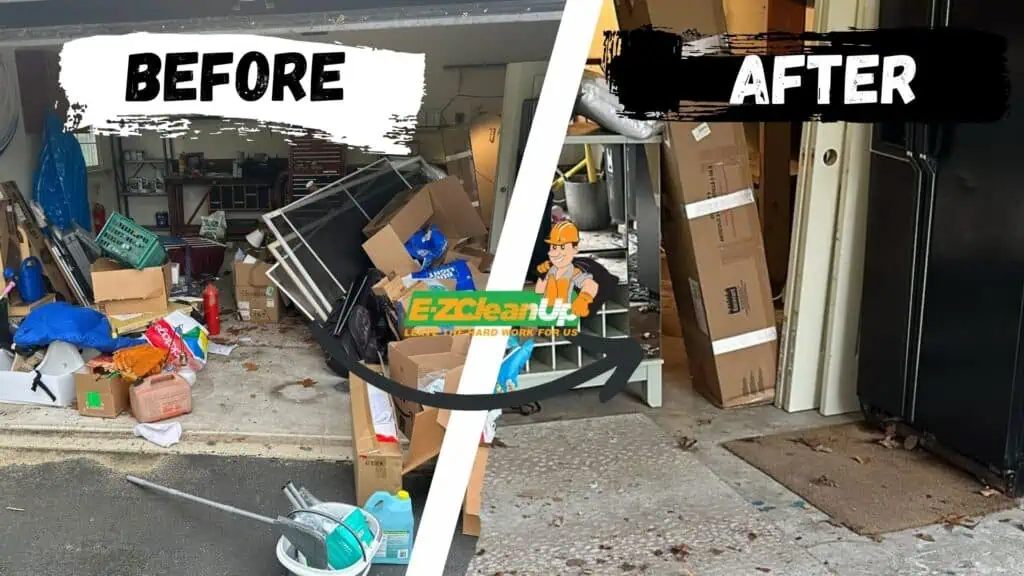The 20/20 Rule streamlines decluttering by asking if items can be replaced for under $20 and within 20 minutes. Apply it across living spaces like kitchens, wardrobes, and garages to keep areas tidy. Regular reassessment and mindful purchases ensure spaces remain functional and pleasant.
So, what is the 20 20 rule decluttering, and how can you apply it to the different parts of your house? Read our guide to learn more.
Definition of the 20/20 Rule
The 20/20 Rule is a simple guide to help you decide when to throw out items. If you can replace something for $20 or less and within 20 minutes, consider getting rid of it. This rule is great for keeping your space clear without regret.
Joshua Fields Millburn and Ryan Nicodemus, also known as The Minimalists, made this rule. They promote a simple lifestyle by owning fewer things, which they believe makes life better and less cluttered.
How to Use the 20/20 Rule
- Finding Things to Toss: Start by checking the most used parts of your home, like the living room or kitchen. Focus on things you haven’t used in a while.
- Making Choices: For each item, think: Can I replace this for under $20 and in less than 20 minutes? If yes, it’s probably time to throw it out. This makes it easier to keep only what you really need.
- Put It into Action: As you sort through your belongings, apply the rule. This will help clear up space and reduce the stress of having too many things.
Applying the 20/20 Rule to the Kitchen
Start in the kitchen by checking countertops, drawers, and cabinets. Look for things like unused utensils or old spices. If you haven’t used something in months, it might be time to let it go.
- Cookware: If you haven’t used a pot or pan in the last year and it can be replaced for under $20 and within 20 minutes, consider tossing it.
- Utensils: If you have extra utensils, like spatulas or potato peelers, that you don’t use, get rid of them.
- Small Appliances: Check for duplicates or rarely used appliances like toasters or blenders. They might be cluttering your space.
Group items by how often you use them. Keep daily items accessible, and store less-used items away. Drawer organizers and storage bins can help keep things tidy.
Every few months, go through your kitchen items again with the 20/20 rule. Also, think twice before buying new kitchen stuff to keep clutter at bay.

Applying the 20/20 Rule to Your Wardrobe
Decide what you want to achieve, like cutting your wardrobe in half or removing unworn items.
Look at each clothing item and ask:
- Can I replace this for under $20?
- Can I replace this within 20 minutes?
If yes, it might be time to declutter, especially if it’s out of style or doesn’t fit. Once you’ve decided what to keep, organize your clothes by type or season for easy access. Keep using the 20/20 rule every few months to keep your wardrobe manageable and relevant.

Applying the 20/20 Rule to Your Garage
Check each item in your garage. If it can be replaced easily and cheaply, consider removing it, especially old tools or sports equipment. Think about how often you use each item. Seasonal items or things not used in the past year could be candidates for decluttering.
Once you’ve decided what to keep:
- Sort by Category: Keep similar items together. For example, group all automotive tools in one area and all gardening supplies in another. This makes it easier to find what you need and keeps your garage organized.
- Use Storage Solutions: Invest in shelving units, bins, and labels to keep everything in its place. Proper storage systems can dramatically improve the functionality of your garage space.
Regularly reapply the 20/20 rule and be mindful of new purchases to keep your garage functional and clutter-free.

Applying the 20/20 Rule in the Living Room
Look around your living room. If you can replace an item for less than $20 and in under 20 minutes, think about letting it go:
- Decor: If it’s out of style or unused, it might be time to part with it.
- Books and Magazines: Keep what you’ll read again and donate the rest.
- Electronics: Get rid of old DVDs, games, or gadgets that are easy and cheap to replace.
- Furniture: If it’s not useful or doesn’t fit well, consider replacing or removing it.
Think carefully before adding new items. This prevents unnecessary clutter and encourages thoughtful purchases. A clutter-free living room looks better and feels more relaxing. It’s a stress-free zone that feels like a sanctuary.
Use the 20/20 rule often to keep your living room tidy. Periodically review each item to ensure everything has value and fits your lifestyle.

Applying the 20/20 Rule to the Garden
Evaluate each garden tool. If it’s replaceable for under $20 and hasn’t been used in a year, consider letting it go. Keep only essential tools like a good shovel or pruning shears.
- Chemicals: Check for expired products and dispose of unnecessary ones safely.
- Pots and Planters: Keep what you will use soon; recycle the rest if they’re broken or outdated.
Use clear labels and organized storage to make gardening easier and protect your tools from the elements. Review your tools and supplies each season to avoid clutter and keep gardening enjoyable.

Applying the 20/20 Rule in the Yard
Look at each item in your yard. If tools or furniture are rarely used and can be cheaply replaced, they’re clutter candidates.
- Organize Tools: Store them neatly on hooks or in a shed.
- Zone Your Yard: Designate areas for relaxation, dining, and gardening to keep things orderly.
Regularly reassess your yard items. Remove anything not used in the past year that fits the 20/20 criteria. A decluttered yard is more attractive and functional, making it a better space for any activity.
By applying the 20/20 rule regularly across your living spaces, you simplify maintenance, reduce clutter, and enhance the enjoyment of your home and garden.
Benefits of the 20/20 Rule
The 20/20 rule is not about discarding everything below a certain cost but about assessing the actual utility of items, especially those that are just taking up space without providing value.
Psychological Benefits of a Cleaner Environment
Clearing out unnecessary clutter can lead to a more organized and inviting living space, which significantly impacts mental health and productivity. A decluttered environment promotes a sense of calm and control, reduces anxiety, and can even improve focus and creativity.
The act of decluttering itself can be therapeutic. It offers tangible results that reinforce a sense of accomplishment and personal efficacy.

Situations Where the Rule Might Not Apply
The 20/20 rule offers a straightforward approach to decluttering by asking if an item can be replaced for less than $20 or within 20 minutes. However, there are instances where this rule may not be applicable or effective:
- Financial Considerations: During times of economic strain, such as a cost of living crisis, the idea of disposing of items only to potentially repurchase them later isn’t always practical or economical. This consideration is particularly relevant for those who are budget-conscious and aim to minimize unnecessary spending.
- Emotional Value: Items with sentimental value may not meet the rule’s criteria but are irreplaceable on an emotional level. Such items include family heirlooms or personal mementos that, while not frequently used, hold significant emotional importance.
Alternative Strategies for More Complex Decluttering Needs
When the 20/20 rule isn’t fitting, consider these alternative strategies that might cater to more complex decluttering scenarios:
- KonMari Method: This method encourages keeping items that “spark joy” rather than focusing solely on cost or replaceability. It’s suitable for those who want a more emotionally attuned approach to decluttering.
- Item Use Evaluation: Instead of deciding based on quick replaceability, evaluate how frequently you use the item. If it hasn’t been used for months or years, it might be time to let go, regardless of its cost or the time it might take to replace it.
- Borrowing or Sharing Economies: Consider participating in community sharing or borrowing initiatives. This approach reduces waste and promotes sustainability by sharing resources among a community. This makes it unnecessary to keep rarely used items just in case.

Declutter Without the Hassle
Using the 20 20 rule effectively uncovers what’s no longer needed in your home. However, the next step—disposing of these items—can be difficult.
EZ CleanUp offers a simple solution to remove all unnecessary clutter from your property, from large furniture to small knick-knacks. We even pay cash for junk cars.
Call us to learn more or book our services!













